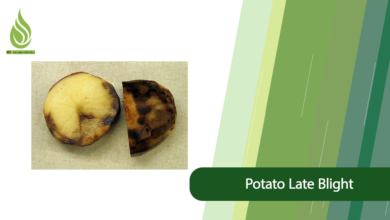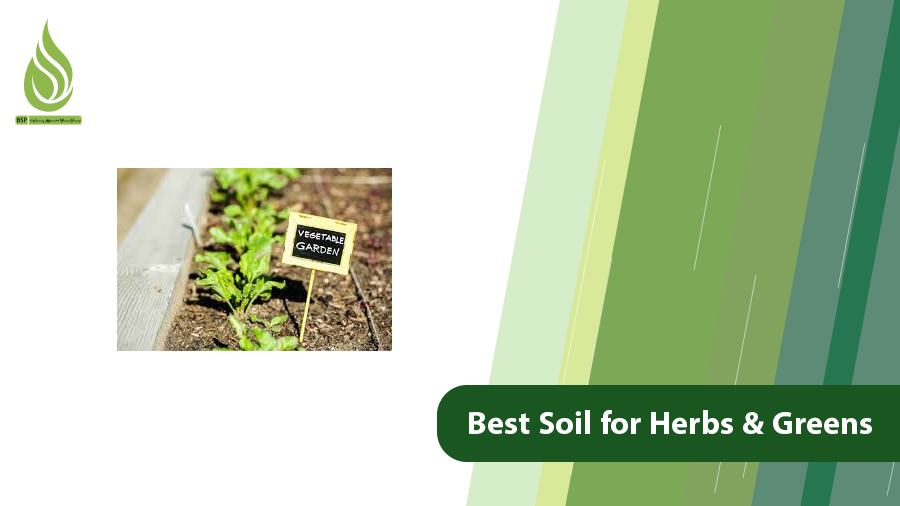
Best Soil for Growing Fresh Herbs and Greens
Fresh herbs and greens, commonly referred to as “Leafy Greens” or “Edible Greens“, are popular in many cultures, prized for their vibrant flavors and versatility. Whether you’re growing them in a garden, a small backyard plot, or a pot on your balcony, the key to lush, flavorful greens lies in choosing the right soil. The soil’s quality directly impacts the taste, color, freshness, and overall growth of your herbs. Poor soil can stunt growth and dull flavors, while the right soil ensures thriving plants with robust taste. Here we explore the ideal soil characteristics, unsuitable soil types, preparation methods, and the best soil mixes for growing fresh herbs and greens, whether in a garden or a pot.
Characteristics of Ideal Soil for Fresh Herbs and Greens
To grow healthy, flavorful herbs and greens, the soil must meet specific criteria. Below are the key characteristics to consider:
Soil Texture
The best soil for fresh herbs and greens is loamy sand, a balanced mix of sand, silt, and clay. This texture provides excellent drainage while retaining enough moisture to keep plants hydrated. Loamy sand allows roots to penetrate easily, promoting strong, healthy growth. Its light, airy structure prevents compaction, ensuring roots can access oxygen and nutrients effectively.
Proper Drainage
Good drainage is critical for herbs and greens, which require frequent watering. The soil must allow excess water to flow out to prevent root rot or waterlogging. Poor drainage can suffocate roots, leading to weak or diseased plants. Loamy sand or soils amended with materials like perlite or sand ensure water moves through efficiently while maintaining adequate moisture.
Soil Fertility
Fertile soil rich in organic matter and essential nutrients is vital for robust plant growth. The primary nutrients, nitrogen, phosphorus, and potassium (often referred to as NPK), are critical for healthy foliage, root development, and overall vigor. Nitrogen, in particular, supports lush, green growth, which is essential for leafy herbs like parsley, cilantro, or basil. Organic matter, such as compost or aged manure, provides a steady supply of these nutrients.
Micronutrients
In addition to macronutrients, herbs and greens need micronutrients like copper, iron, manganese, and zinc in small but essential amounts. A well-balanced soil enriched with organic compost typically supplies these micronutrients. However, deficiencies in any nutrient can weaken plants, resulting in pale leaves or stunted growth. Regular soil testing can help identify and address shortages.
Soil pH
The soil’s pH level, which measures its acidity or alkalinity, significantly affects nutrient availability. Most herbs and greens thrive in soil with a pH between 6.0 and 7.5, which is slightly acidic to neutral. Within this range, plants can efficiently absorb nutrients. If the pH is too high (alkaline) or too low (acidic), nutrient uptake may be impaired, even if the soil is fertile. Testing and adjusting soil pH ensures optimal growing conditions.
Disease-Free Soil
Healthy soil should be free of pathogens, fungi, or pests that could harm plants. Soil with active, beneficial microbial activity naturally suppresses diseases and pests, creating a thriving environment for herbs. Using clean, well-prepared soil or sterilizing it before planting can prevent issues like fungal infections or root diseases.
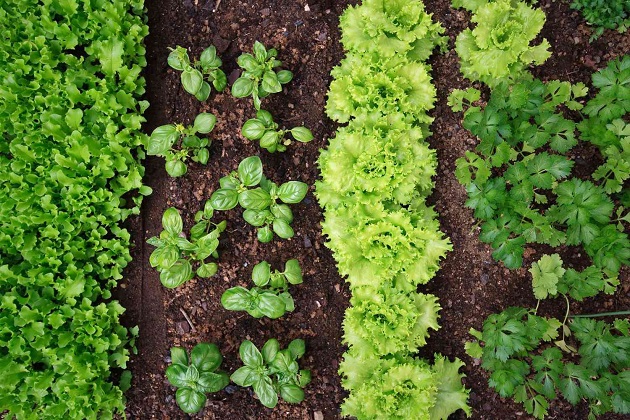
Key Takeaway: Loamy sand is the gold standard for growing herbs and greens. Its balanced texture ensures good drainage, moisture retention, and root penetration, setting the stage for vibrant, healthy plants.
Soil Types to Avoid for Growing Herbs and Greens
Not all soils are suitable for growing fresh herbs and greens. Certain soil types can hinder growth or produce lackluster results. Here’s what to avoid:
- Heavy Clay Soil: Clay soils are dense and compact, restricting root growth and trapping water. This poor drainage can lead to root rot and stunted plants. But clumpy soil has solutions.
- Overly Sandy Soil: Soils with too much sand drain too quickly, failing to retain water or nutrients. Plants in such soil often suffer from dehydration and nutrient deficiencies.
- Nutrient-Poor Soil: Soil lacking organic matter produces weak, pale herbs with subpar flavor. Organic matter is essential for sustained plant health.
- Contaminated Soil: Soil with high salt content, chemical pollutants, or pathogens can kill plants or make them unsafe for consumption. Avoid using soil from contaminated sites or areas with heavy pesticide use.
How to Prepare Soil for Growing Herbs and Greens
Proper soil preparation is the foundation of a successful herb garden. Follow these steps to ensure your soil is ready for planting:
Step 1: Test the Soil
Before planting, conduct a soil test to assess pH and nutrient levels. Home testing kits or professional lab services can identify deficiencies in macronutrients (nitrogen, phosphorus, potassium) or micronutrients. Knowing your soil’s baseline allows you to make targeted improvements.
Step 2: Amend the Soil
Based on the soil test results, amend the soil to create optimal conditions. Add organic matter like aged animal manure, compost, or vermicompost to boost fertility and improve texture. If the pH is too high (alkaline), incorporate sulfur or organic materials like peat moss to lower it. If it’s too low (acidic), add lime to raise the pH. These amendments ensure the soil is nutrient-rich and pH-balanced.
Step 3: Improve Soil Texture
If your soil is too clay-heavy, lighten it by mixing in sand or compost to improve drainage and aeration. For overly sandy soil, add organic matter or aged manure to enhance water and nutrient retention. A balanced texture supports healthy root development and consistent growth.
Step 4: Enhance Drainage
To improve drainage, incorporate materials like coarse sand, perlite, or gravel. These additives prevent water from pooling around roots, reducing the risk of rot. For raised beds or containers, ensure proper drainage holes or layers to facilitate water flow. We suggest you also take a look at our guide to planting leafy greens.
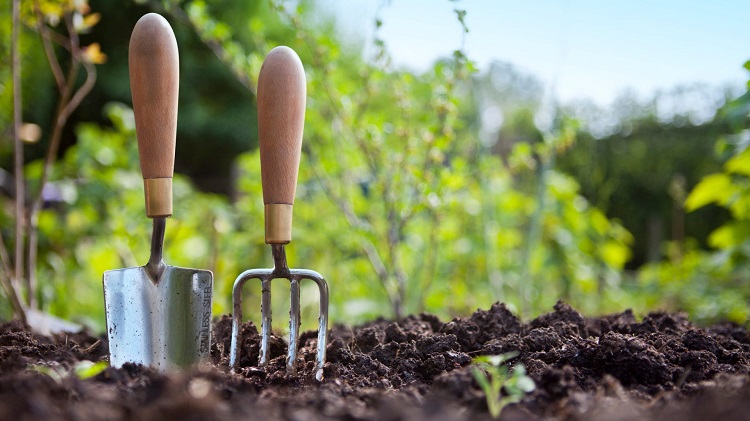
Best Soil Mix for Growing Herbs and Greens in a Garden Bed
For garden beds, the ideal soil mix combines fertility, drainage, and structure. A recommended blend includes:
- 30–40% garden soil: Provides a stable base with natural minerals.
- 30% compost or aged manure: Supplies nutrients and organic matter for sustained growth.
- 20–30% sand or loamy sand: Enhances drainage and prevents compaction.
This mix ensures the soil is nutrient-rich, well-draining, and loose enough for roots to spread easily. Mix the components thoroughly to create a uniform growing medium.
Best Soil Mix for Growing Herbs and Greens in Pots or Containers
Container gardening, such as on a balcony or patio, requires a slightly different approach due to limited space and faster drying. The best soil mix for potted herbs includes:
- 50% lightweight garden soil or potting mix: A high-quality, lightweight base ensures good structure and nutrient availability.
- 30% coco coir and perlite: Coco coir retains moisture, while perlite improves drainage and aeration, preventing soil from becoming too compact.
- 20% compost or aged manure: Provides essential nutrients and supports long-term plant health.
This combination keeps the soil moist but not soggy, preventing the rapid drying common in pots. Ensure containers have drainage holes to avoid water buildup.
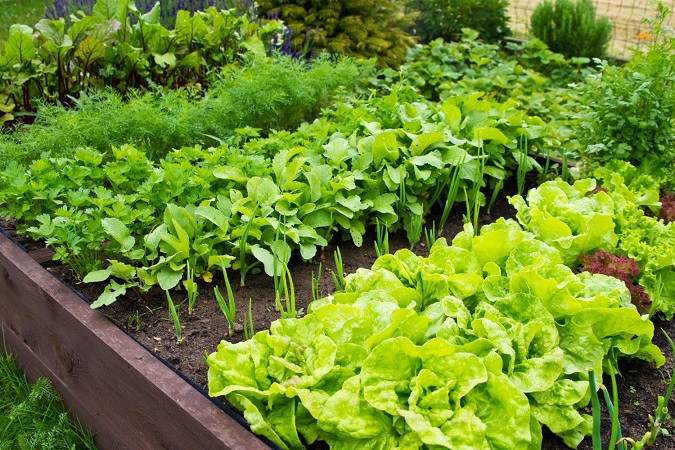
Fertilizers for Healthy Herbs and Greens
Fertilizers play a crucial role in maintaining soil fertility and supporting vigorous growth. Both organic and chemical options can be effective when used correctly.
Organic Fertilizers
Organic fertilizers, such as aged animal manure, vermicompost, homemade compost, or commercial organic blends, are ideal for herbs and greens. These materials release nutrients gradually, improving soil structure and moisture retention. They also foster beneficial microbial activity, which enhances nutrient availability and suppresses diseases. Regular applications of organic fertilizers keep the soil fertile and support consistent growth.
Chemical Fertilizers
If soil tests reveal specific nutrient deficiencies, chemical fertilizers can address them. Nitrogen is particularly important for leafy herbs, promoting vibrant green foliage. Fertilizers like ammonium sulfate provide a quick nitrogen boost and can also lower the pH in alkaline soils. However, overuse of chemical fertilizers can harm plants and pollute the environment, so apply them sparingly and only as needed based on soil test results.
Conclusion
To grow fresh, flavorful herbs and greens, start with light, fertile, well-draining soil. A loamy sand mix enriched with compost or aged manure is ideal for garden beds, while a blend of potting soil, coco coir, perlite, and compost works best for containers. Test and amend your soil to ensure proper pH and nutrient levels, and avoid heavy, poorly draining, or contaminated soils. With the right soil mix and care, your herbs will thrive, delivering vibrant color, rich flavor, and unbeatable freshness to your meals.
